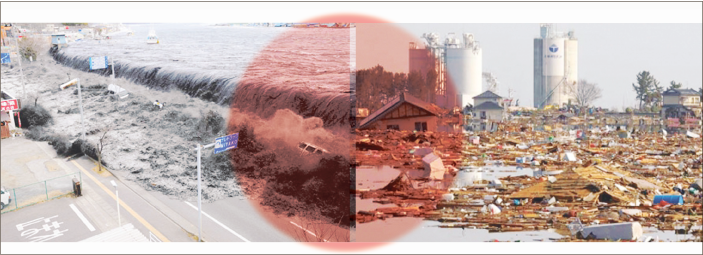Now that we have passed the third week, scientists around the world are wondering how to help the Japanese deal with their still-unsolved environmental crisis.
Yes, the earthquake was bad.
In fact, the resulting tsunami was even worse.
But after a meltdown at the Fukushima Dai-ichi nuclear power plant only a two hour drive north of Tokyo, Japan has had a far more deadly dilemma to deal with.
Radiation is a deadly thing and often covers an enormous area of land. While many people worldwide have turned accusing glares towards those operating the plant, the reality is that there really was no way for the Fukushima plant workers to have set up any more safeguards than what was already in place.
“It is difficult to prepare for every possibility. Reports indicated that the reactor was designed to shut down automatically if there was an earthquake. They also had diesel generators to keep pumping water to cool the reactor [in a worst case scenario]. So they were prepared for some emergencies. The problem was caused by a failure of the generators. There is a limit to how many backup systems are reasonable to put in place,” – Dr. David DeWitt, Chair of Liberty’s Biology/Chemistry Department, said.
So now that the blame has been put aside, we ought to turn our thoughts toward what we can do from here, rather than what could or should have been done to avoid this catastrophe.
The Fukushima reactor meltdown is, without a doubt, the second-largest nuclear calamity to be dealt to the Japanese people in the last hundred years (and one of the worst worldwide), and with so much death and destruction on their hands from the previous natural disasters, the Japanese government needs help dealing with the numerous problems on its plate. With that said, it falls to the various aid-providing organizations to step up to the plate and offer a hand to our struggling neighbors across the Pacific.
“The world is shocked and saddened by the images coming out of Japan. We will do anything and everything we can at this very difficult time,” U.N. Secretary-General Ban Ki-moon said in a Reuters.com article.
Alongside of this help provided by the U.N. is an army of American Red Cross and Salvation Army workers.
But most surprising was the readiness of World Vision, an Evangelical Christian organization, and the incredible witness that they have been as employees and volunteers alike immediately went to the aid of the Japanese people.
“Our offices in Indonesia, the Philippines, Papua New Guinea and the Solomon Islands are on alert and staff in coastal areas have been advised,” Geoff Shepherd, World Vision’s humanitarian and emergency affairs director for the Asia-Pacific region, said on the World Vision website just moments after the initial earthquake. “We’ve also alerted our Global Rapid Response Team and have put team members on standby for possible deployment to affected areas. This could be a very serious disaster in multiple countries and our staff is prepared to respond.”
Besides the few already listed, there are probably a dozen other organizations that, with a simple text, you can donate $10 to helping those affected by the earthquake, tsunami, and radiation problem in Japan.
Doctors Without Borders, GlobalLiving, and even Google have been showing a strong effort to help those in need.
These are just the a handful of ways in which our international community has stepped up to help Japan, a few of which have also been working to spread the Gospel in the disaster area.
